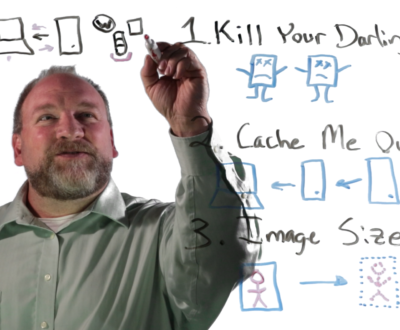Say what we want about Adwords; for many businesses it is – and will remain – a vital part of their web marketing. For agencies managing client campaigns, you can swiftly become adept at using Adwords to generate traffic and leads, but for the d0-it-yourselfer with a new product or startup, the Adwords interface can be a daunting array of powerful, but confusing choices.
There are a few common pitfalls when getting started with Adwords. These can cost you real time and money; not to mention the loss of an opportunity if there is a limited window in time and space to capitalize on your idea or product concept. Let’s review a few things to avoid:
Not Knowing Your Max Spend Per Acquisition
This comes in three parts. The point of Adwords is, after all, to pay Google a per-click fee to send searchers to your website. But how much is too much to spend per-click? This will all depend.
First we consider your product. How much do you charge for your product? How much of that is marked up, pure profit? Do you have ongoing services that make this measure more complicated? In marketing terms, the Total Lifetime Value of one customer may be more than a simple revenue/profit calculation on the product, but this value must be estimated nonetheless. Your Max Spend Per Acquisition is up to you, but should be something less than the Total Lifetime Value; hopefully significantly less.
With me so far? Now the next part can be trickier. We need to identify how many clicks to your website tend to lead to a purchase. Hopefully, if you have an established business and website, you have existing data to help establish this. For startups, this can be very difficult to assess. The quality of the website, how it speaks to potential clients, and the story it tells in solving your customers’ need will all play into the Conversion rate. If you sell $40 watches, you will hopefully have a much higher Conversion rate value than a website selling $80,000 sports cars.
There is a lots of advice on what percentage of CLV to spend to capture a customer. Again, this is all related to the price of your products or services. If you sell $40 widgets at $10 profit, 40% spend may seem like a lot. But for the the $80,000 widget, you may be comfortable spending 80% of the CLV. For the sake of this article, we will use 20% of CLV for our acceptable investment amount, per customer.
Our final formula is something like:
(CLV * .20) = Acceptable Spend Per Sale (AS)
(Average # Yearly Sales / 12 ) * AS is something like a good starting budget for Adwords. The idea being that there are a lot of knobs to move in Adwords to refine and maximize your Pay Per Click effectiveness, but you can’t get this far without a basic idea of what a sale is worth to you over time.
Failing to Use Ad Groups
With so many keywords and possible keyword combinations, it may be tempting to insert every conceivable keyword combo into one or two ads. This can be a huge mistake!
Research suggests that people are several times more likely to click an ad that contains their exact keyword (or is close!) compared to ads that may have synonyms or be partly related, but did not match the customer’s search query.
A better strategy for getting more targeted traffic is to break up your ads into ad groups. Each ad group can then be customized for more specific, matching ad text, and more nuanced key word building.
If you sell Apples and Oranges, the average searcher will likely be searching for one or the other of those products; not both together. By creating ad groups, you can create an “Apples for Sale” ad for Apple searchers, and an “Oranges for Sale” ad for Orange searchers. Both your clicks, and the quality of the leads generated by those clicks will go up for both ad types, if they are grouped and targeted to the proper, relevant keywords.
Not Knowing Thy Enemy

This is critical competitive intelligence data!
You can learn not only who your competition is for your chosen keywords, but how their campaign is stacking up against yours. But there’s a catch: you only see these insights once you’ve collected several weeks of campaign data.
The Opportunities section is similarly populated based on data from the campaign that is already under way.
OK, but what about first-timers? These tools are great for existing campaigns, but what about before we spend any money?
Well there is a reason marketing companies exist, and that is because it can be extremely complicated and require time and knowledge to do meaningful market research. A half-way point would be a tool like Spyfu, which will provide insights on marketing campaigns and budgetary estimates for your competition. There are numerous other tools out there doing similar things; some free, some as subscription services. The key is, you will need to do some homework to ensure the dollars you spend are well targeted, or you may be throwing money away entirely.
Failing to Test Different Approaches
Adwords has terrific tools for evaluating the performance of your campaigns. Too often, we get tied down to one or two ads, in one or two Ad Groups, and we don’t take advantage of the perfect test environment! Since you can create similar campaigns and similar groups, all with variations in keyword collections, and the text of the ads themselves, you are doing your business a disservice if you don’t try at least a few different combinations, identify more successful engagement on one of the campaigns, and then shift more focus to that group or campaign, but pausing or removing less effective variations.
This absolutely requires patience and work. You don’t want to get tripped up by false positives and make too many changes too soon in the testing, but you also will never know how much better your ads or identified keyword groups can be unless you test for yourself, and take action based on the results.
With a bit of careful planning, and a willingness to use the data available to you to empower your own decision-making, Ad Words can be everything it promises to be.
Bill lives and plays in Fort Collins, Colorado. After a fulfilling career for a Fortune 50 company, Bill founded Colorado Web Design in 2012 with a passion for creative digital solutions for business. Bill likes to manage a wide variety of projects and tasks for his clients in the digital space. The creative elements of website design, application design, and marketing are enough to keep anyone busy and engaged, but wiping the slate clean over and over at the start of new projects comes with its own challenges. "I like to start with really good client communication sessions. The rest is easy if you get started in the right way." He plays tennis, bikes, and hikes and then undoes all of that with too much delicious food and TV watching.
About Colorado Web Design
We've been building websites for Colorado businesses since 2002. We are a small team of dedicated individuals who love the challenge of each new marketing project. We live and play in northern Colorado.












